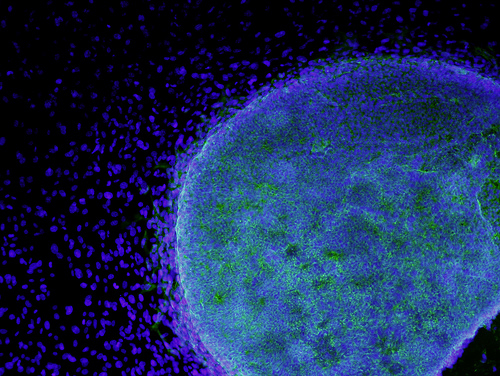The headlines are attention grabbing: “House of Lords Legalizes Three-Parent Babies”. But what exactly is a three-parent baby? And what does their legalization mean?
Three-parent babies could be the answer to one of the most common and deadly genetic mutations. Mitochondrial mutations within a developing fetus can lead to crippling diseases throughout the child’s adult life. Three-parent babies provide a permanent genetic solution to these devastating problems.
The mitochondria are organelles within the cell that are responsible for breaking down sugars into useable energy for the cell. Mitochondrial DNA is different than the DNA that codes for the rest of the bodies development and traits. Because mitochondria were developed from outside bacteria absorbed by the cell, they have a completely different set of DNA that only contains 37 genes. These genes code for everything that the mitochondria do.
Unlike other DNA, in which you get two copies of each gene, one from each parent, each person only has one set of mitochondrial DNA because it is only passed down from the mother. Therefore, any mutations in the mother’s mitochondrial DNA have a 100% chance of being passed down to the child. Since the mitochondria is responsible for providing the energy cells need to function, these mutations can lead to heart issues, respiratory issues and developmental problems. Diseases stemming from mitochondrial mutations are often fatal and occur in 1 in 6,500 births.But what if there was a way to eliminate the mutated mitochondrial DNA in a developing fetus? Three-parent babies offer one solution. The idea behind three-parent babies is simple, if you can replace the mitochondrial DNA of an embryo with that of a healthy donor, the child will be born healthy. This is possible because mitochondrial DNA is completely separate and codes only for functions within the mitochondria; it has nothing to do with behavioral or physical traits.
In order to create a three-parent baby, two embryos need to be created – one from the biological mother and one from the donor parent. The nucleus from the biological mother (which contains the DNA of the child that is related to the physical and behavioral traits) is inserted into the embryo from the donor mother, the nucleus of which has been removed.
This has created controversy among many religious groups, as it requires the destruction of a fertilized egg, also known as a stem cell. If allowed to develop normally, this cell would turn into a human being. Groups such as the Catholic Church are against procedures such as this one because they see the process as destroying the potential of a human life.
There are many other controversies surrounding the legalization of this procedure in the UK. The first of which is that European law prohibits any genetic alterations that can be passed down into future generations. This is because these future generations cannot consent to the genetic alteration that is going to affect them. The parents of the first generation child can give consent for their unborn fetus but have no legal consenting abilities for the future generations. The UK is directly violating this law, because the change in the mitochondrial DNA would be permanent for all future generations. This is where the process differs from organ donations, as some people have compared it to. In organ donations, the genes for the faulty organs are still going to be passed down even though the individual has been corrected for the malfunction. In this new form of IVF, the change will be permanent. Some interpret this as doctors having the ability to “play god” in permanently changing the human genome.
The controversy that holds the most weight in the eyes of the public is not the legal or religious controversy. It is the idea that these children represent the top of a slippery slope that could end up leading the widespread creation of “designer babies.” Yes, it is true that these children will have genetic material that has been specifically selected for them, but it is crucial to remember that these specially selected genes are not those for blonde hair or blue eyes. They are the genes that represent the difference between life and death for a child. It is for this specific reason that the procedure should, and most likely will, be legalized in countries other than just the UK.




